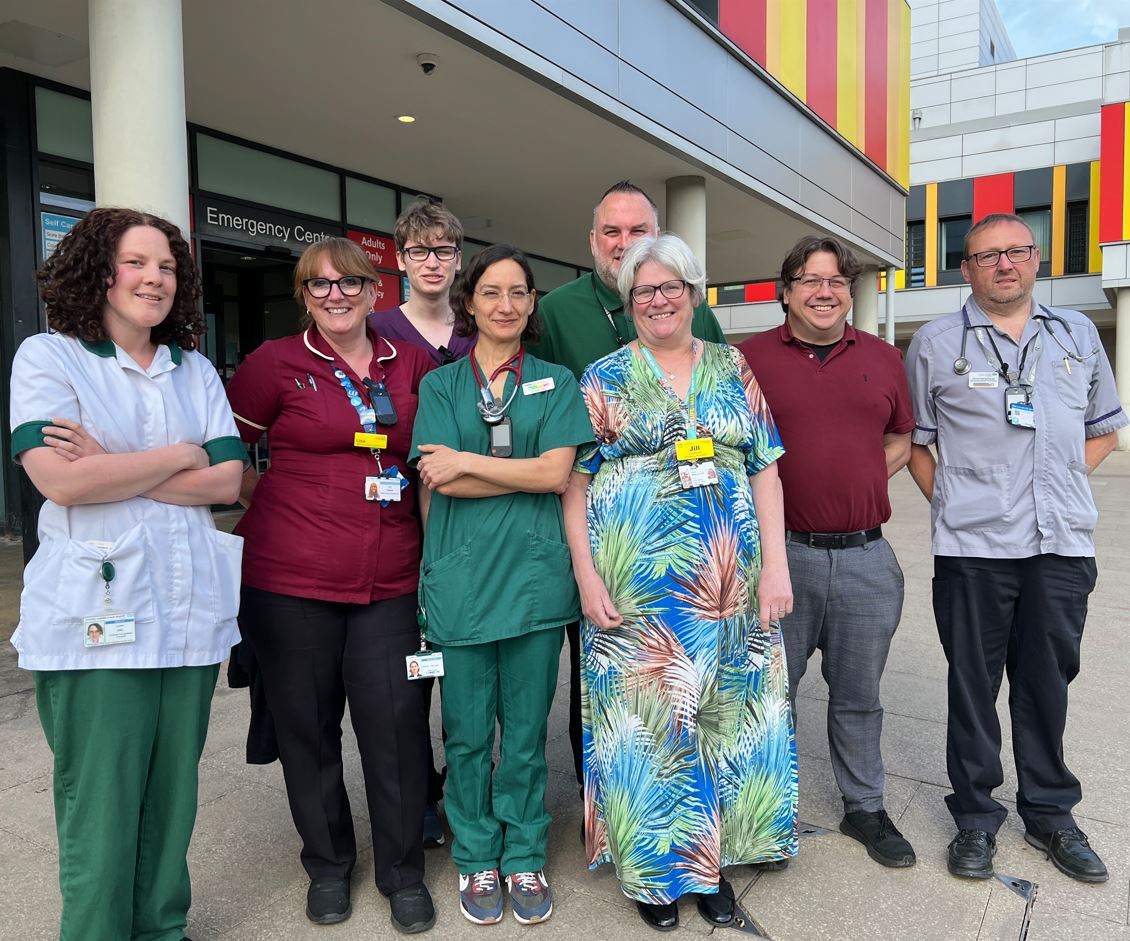Smart new UHNM-led digital tool helps get patients home a day early
A new digital tool piloted by University Hospitals of North Midlands NHS Trust (UHNM) has helped to cut the stays of patients re-admitted to hospital by a day.
The High Risk of Delayed Transfer of Care (HRD) tool, which has been on trial at the Royal Stoke University Hospital since December, uses GP and hospital health records to flag those who are likely to be stuck in hospital longer than needed, such as those with additional care needs or living alone, enabling staff to better plan timely and appropriate care.
Almost 2,000 patients at UHNM were flagged by the tool in the first three months, helping to ease pressure and free up beds in areas across the Trust including the emergency department (ED) and older adults wards.
It runs on an opt-out basis, meaning teams using the tool will be able to access health and care records unless they are asked not to by the patient.
Dr Andrew Davy, GP lead for research and development in ED, said: “This tool was developed to help us spot patients in our community who are most likely to face delays leaving hospital such as those who are frail, living alone, or need extra support at home. Too often, we wait until we’ve treated a patient’s immediate medical problem before making discharge plans, which can cause unnecessary delays while we wait for things like therapy assessments or social care reviews.
“The HRD tool changes that, drawing on information from a patient’s care records, including medical conditions, care packages, and home circumstances to identify those at high risk of delayed discharge as early as possible. This allows the right teams to step in sooner and start planning discharge right from the front door.
“On average, we’re already seeing hospital stays reduced by more than a day for re-admitted patients flagged by the tool. This makes a huge difference, it’s better for patients, reduces pressure on beds, and helps us keep the system flowing.
“The opt-out approach is key to the success of the HRD tool because it ensures that our clinicians to have timely access to the information they need to make early, informed decisions. This means we can identify at-risk patients sooner, coordinate support faster, and avoid unnecessary delays.
“Feedback from both clinical teams and patients thus far has been very positive, and looking ahead, we also hope to work more closely with local authorities to improve communication when patients with existing care packages come into hospital, reducing wasted visits and ensuring a smoother return home. It’s all about delivering safer, more joined-up care for our local community.”
One patient to benefit from the tool, said: “The best part of my experience was how the staff really listened to me and took the time to explain everything clearly. The nurses were fantastic, they made decisions that genuinely helped improve my COPD. I felt cared for and involved every step of the way. I can’t think of a single thing that could have made my experience better.”
The tool has been developed in-house by UHNM’s business intelligence service in partnership with the Integrated Care Board (ICB), Midlands Partnership NHS Foundation Trust (MPFT), the North Staffordshire GP Federation, NHS Midlands and Lancashire Commissioning Support Unit (CSU), Keele University, Staffordshire County Council and Stoke-on-Trent City Council, along with support from UHNM Charity and the National Institute for Health and Care Research (NIHR) Applied Research Collaboration West Midlands.
Rob Chambers from UHNM’s front of house frailty team, said: "This collaborative, new approach has provided a very clear medical plan through robust communication through our teams, and the whole process worked quickly and effectively.”

